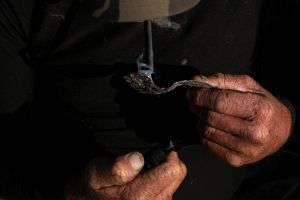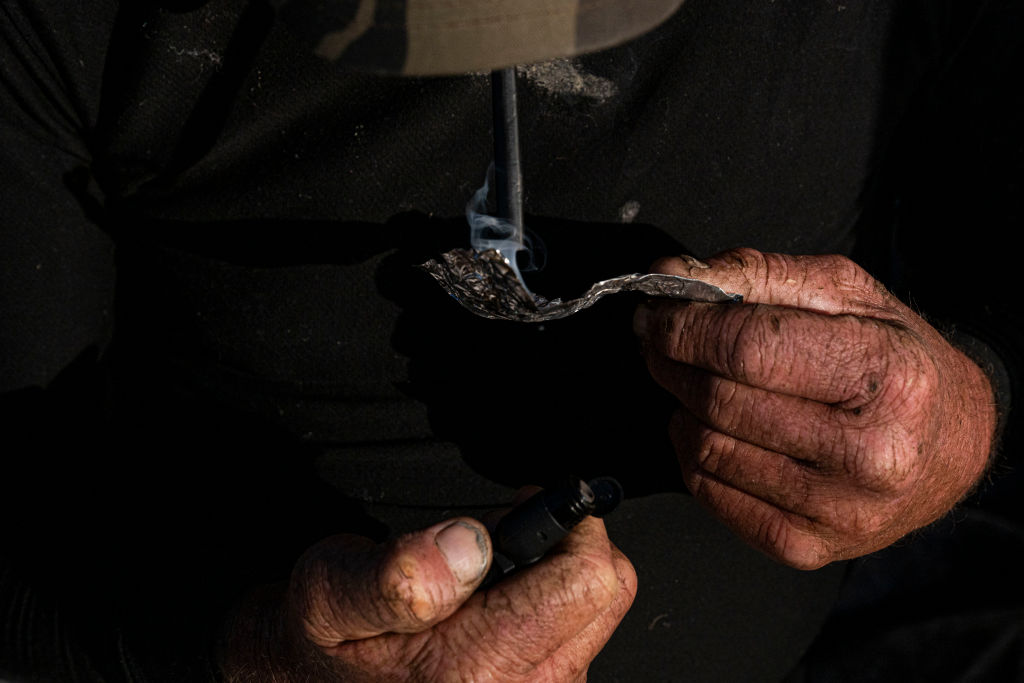John Marvin Weed stood his ground as his assailants encircled him. He had already been pummeled and was bracing himself for more. Weed was with family that day, enjoying Maryland’s Great Frederick Fair when a young man asked him for a dollar. When Weed refused, the young man and his brother attacked.
In a video of the incident, Weed appears calm, hands low at his sides, as the brothers taunt him. Mild-mannered and middle-aged, Weed was a builder; he helped with his hands. ‘He gave so much love to his young niece and nephew, four-wheeler rides, playing in the pool, reading bedtime stories, and so much more,’ said Weed’s sister, Lori Hawkins.
A year after Weed moved with his sister to Frederick County to care for their aging parents, a punch to the back of the head knocked him to the ground near the midway area of the fair. The brothers laughed at Weed, and one stooped to spit in his face. He died of his wounds the next day.
Weed was beaten to death over $1.
The Frederick County Circuit Court placed on probation the younger of the two brothers and ordered him to complete an anger management program. The older brother pleaded guilty to second-degree assault for spitting on Weed after he had fallen, but a second assault charge was dropped. Because they are both under 18, prosecutors argued they should be tried as adults. Two motions to move each case to adult court were denied.
Just days after the gavel came down as a slap on the wrist in Frederick County, a gunshot shattered another family’s life in Wilson, North Carolina.
As five-year-old Cannon Hinnant rode his bicycle, Darius Sessoms approached him, produced a gun, and shot him in the head, according to eyewitnesses. Sessoms killed Hinnant as he played in the front yard of his father’s home with his two sisters, seven and eight years old. ‘My first reaction was he’s playing with the kids,’ said Doris Lybrand, a neighbor who witnessed the shooting through the window of her home. ‘For a second, I thought, “That couldn’t happen.” People don’t run across the street and kill kids.’ But to her and the Hinnant family’s horror, it did happen.
The Hinnant family is inconsolable. They are also angry at the lack of attention the killing received, compared to what followed George Floyd’s death in Minneapolis: a deluge of media coverage and political oratory, protests, and policy proposals. ‘We expect the same outrage about him as an innocent child as you have about all of the George Floyds, and all of these other people,’ Cannon’s grandmother, Gwen Hinnant, told me. The dynamics in Maryland were the same. Weed was white, his assailants were black, and the incident also received little attention.
Most importantly, both cases highlight the fundamental problem of crime and punishment today: we proceed from the belief that America suffers from over-incarceration. In this view, Weed’s killers must receive clemency, lest we enlarge the stain of mass incarceration. But that’s hardly true. Sessoms, for example, had two pending counts of felony maintaining a vehicle, dwelling or place for a controlled substance in Wilson County, and a rap sheet mapped across several counties. Had he been incapacitated behind bars, Cannon would be alive.
Most of what Americans have been told about mass incarceration is untrue, or takes half-truths and tortures them into whole lies.
About half of federal prisoners are incarcerated on drug charges, but that does not necessarily mean they are harmless. Out of 70,000 federal convictions in 2015, only 198 were for simple drug possession. Just six were for simple possession of crack cocaine. The vast majority of felony arrests that end in convictions are the result of plea bargains that understate an inmate’s history.
In 1997, Joel Francisco pleaded no contest to charges of assault with intent to murder, conspiracy, racketeering and racketeering conspiracy. He was a federal inmate serving a life sentence for a drug offense in 2005 when the First Step Act set him free. Shortly after his early release in 2019, Francisco stabbed a man to death.
[special_offer]
Federal inmates constitute about 12 percent of all prisoners. Most American inmates are in state facilities, where those incarcerated primarily for drug offenses constitute less than 15 percent of the prison population. According to Rafael A. Mangual, the deputy director of legal policy at the Manhattan Institute, four times as many state inmates are behind bars for one of five serious crimes: ‘murder (14.2 percent), rape or sexual assault (12.8 percent), robbery (13.1 percent), aggravated or simple assault (10.5 percent), and burglary (9.4 percent).’ One in five state drug offenders spends less than six months in prison — 45 percent serve less than one year. Twenty percent of convicted murderers, and nearly 60 percent of those convicted for rape or sexual assault, serve less than five years of their sentences.
The consequences of the revolving door are predictable.
A special report by BJS statisticians found 83 percent of state prisoners released in 2005 across 30 states were arrested at least once within nine years after getting out. More than three-quarters of released drug offenders were arrested for a non-drug crime within nine years. For example, of 118 homicide suspects Baltimore police identified in 2017, 70 percent had been previously arrested on drug charges. In Illinois, a study found that of those arrested for homicides or shootings in Chicago in 2015 and 2016, about ’90 percent had at least one prior arrest, approximately 50 percent had a prior arrest for a violent crime specifically, and almost 40 percent had a prior gun arrest.’ Of this number, nearly 36 percent were ‘on parole or probation’ at the time of the alleged crime.
America has an under-incarceration problem based on the narrative that it doesn’t, and the consequences bear out as a war on decent people in our streets. Gwen told me the Hinnant family intends to honor Cannon by building a memorial park in his name, where children can play and ride their bicycles. As the Hinnant and Weed families mourn, however, a question remains. When Democrats and Republicans seem enthralled or cowed by the zeitgeist of reform, who will fight to keep communities safe?

























